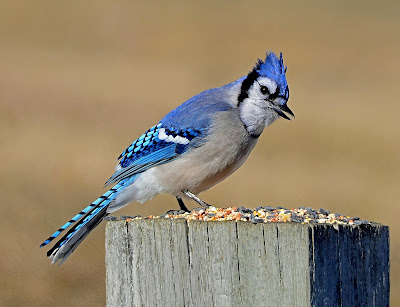Nature News: Gender roles reversed for spotted sandpipers
I am constantly reminded that I am not a very good birder. Most recently while traveling to Wisconsin I stopped in at the Montezuma National Wildlife Refuge in upstate New York (we have such great National Wildlife Refuges in this country I make it a point to visit one whenever I can). This refuge is located at the north end of Cayuga Lake (the longest of New York’s Finger Lakes) in the middle of one of the most active migratory routes for birds (the Atlantic Flyway) and provides resting, feeding and nesting habitat for a wide variety of waterfowl and other migratory birds.
 |
| A spotted sandpiper along a stream in the Montezuma NWR |
A slender sandpiper was bopping along the edge of one of the river beds. I use the word “bopping” because it was doing just that - strutting and bobbing its tail as it walked. I was very excited... I didn’t recognize it. So I pulled out my bird book and identified it as a spotted sandpiper. Wow, I thought, how exotic! Then I looked up spotted sandpipers and discovered that they have the most widespread distribution of any sandpiper in the country and are fairly common in the seacoast area. Here’s what the Cornell Laboratory of Ornithology has to say about their distribution: “Spotted sandpipers are common near most kinds of freshwater, including rivers and streams, as well as near the sea coast. Their range includes water bodies in otherwise arid parts of the continent, and it extends into the mountains, where they may occur upwards of 14,000 feet above sea level. Breeding territories generally need to have a shoreline, a semi-open area where the nest will be, and patches of dense vegetation for sheltering the chicks. Spotted Sandpipers spend the winter along the coasts of North America or on beaches, mangroves, rainforest, and cloud forest up to 6,000 feet elevation in Central and South America.” I thought I had at least a passing acquaintance with most birds in the seacoast yet had totally overlooked one that is common around here -- it took a trip to upstate New York to find this out.
But now that I know they are common I plan to start looking for them because spotted sandpipers are particularly interesting birds. Here’s why. The typical gender roles are reversed for this bird (at least from our traditional perspective). The males are smaller and less aggressive than the females. Females perform the courtship displays -- flying with wings held open while singing or a strutting display on the ground. Males take care of the nest and the young (males have more prolactin than females - prolactin is a hormone associated with parental care) while the females defend the territory and are often sexually promiscuous (females can store sperm for a month -- so that the eggs she lays for one male to take care of might have been fathered by a different male). Researchers have found that while males have 10 times the amount of testosterone than females, during breeding season female testosterone levels increase substantially (a seven-fold increase). It is thought that these hormonal differences account for the role reversal between the males and females.
Given that spotted sandpipers are so common I am sure that I have seen them but not recognized them -- even though they are fairly easy to identify (in the sandpiper universe anyway). First, look for their characteristic teetering motion. It isn’t clear why they do this, but newborn chicks teeter so it is thought to be an innate behavior. They teeter faster when nervous and only stop when they are truly alarmed, aggressive or courting (Cornell Lab). Their flight is distinctive as well - quick wing beats followed by glides. During the breeding season it is easy to identify them by plumage - they have obvious dark spots on their breasts. These fade as the breeding season ends, at which point they look a lot like many other sandpipers.
So, if you see something that looks vaguely sandpiper-ish, especially if it is away from the sand, perhaps inland along a stream or riverbank, look more closely, it could be a common, spotted sandpiper.



Comments
Post a Comment